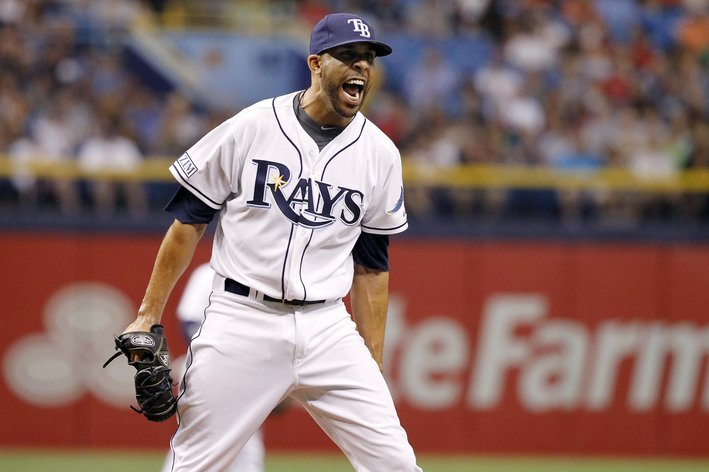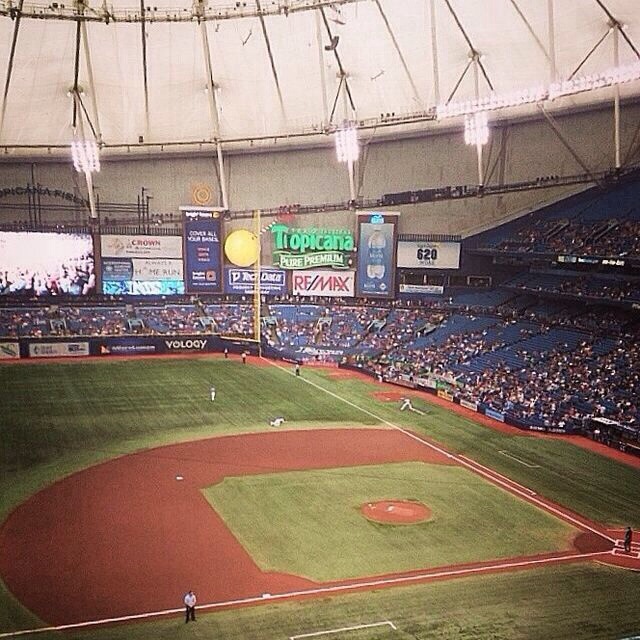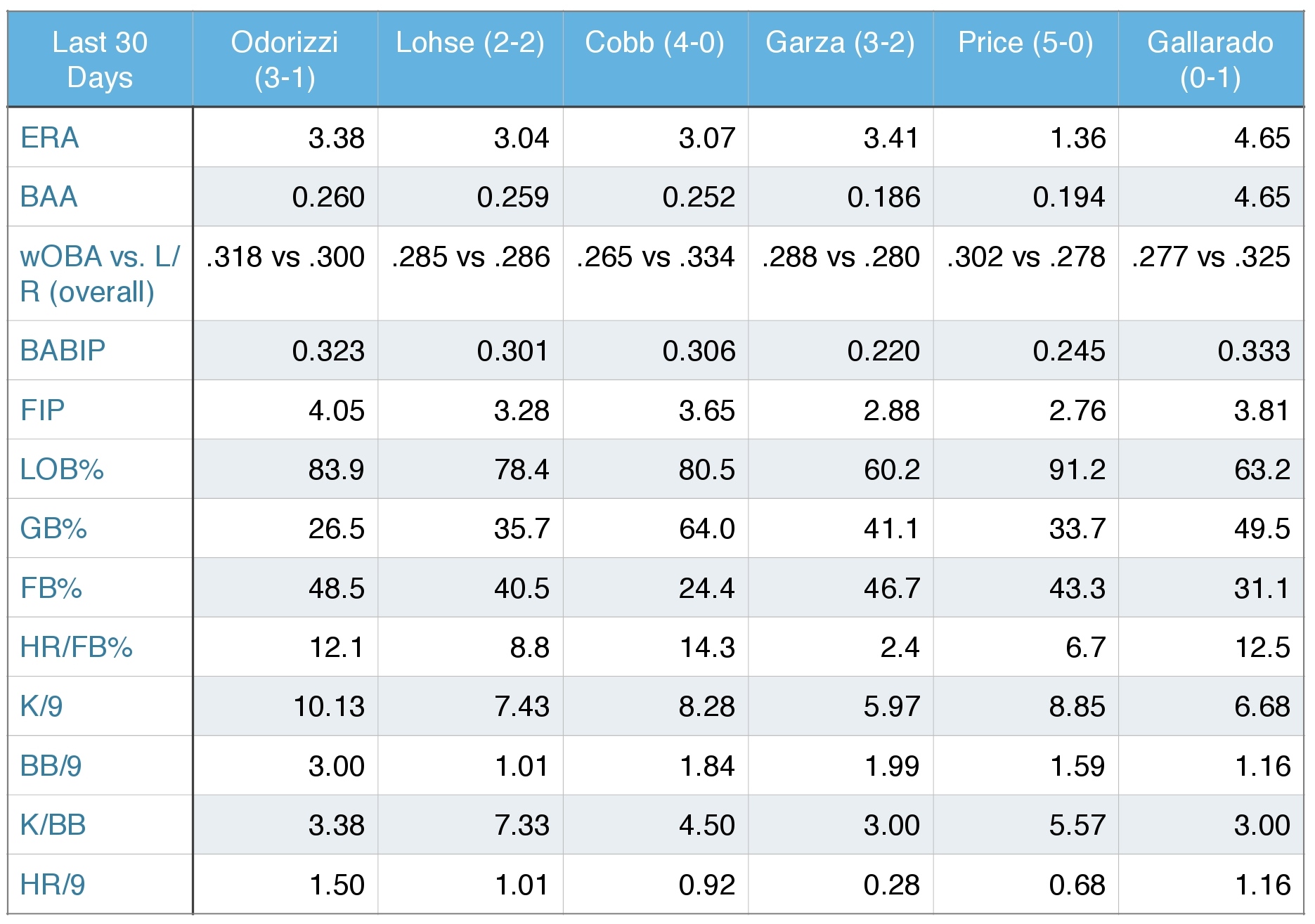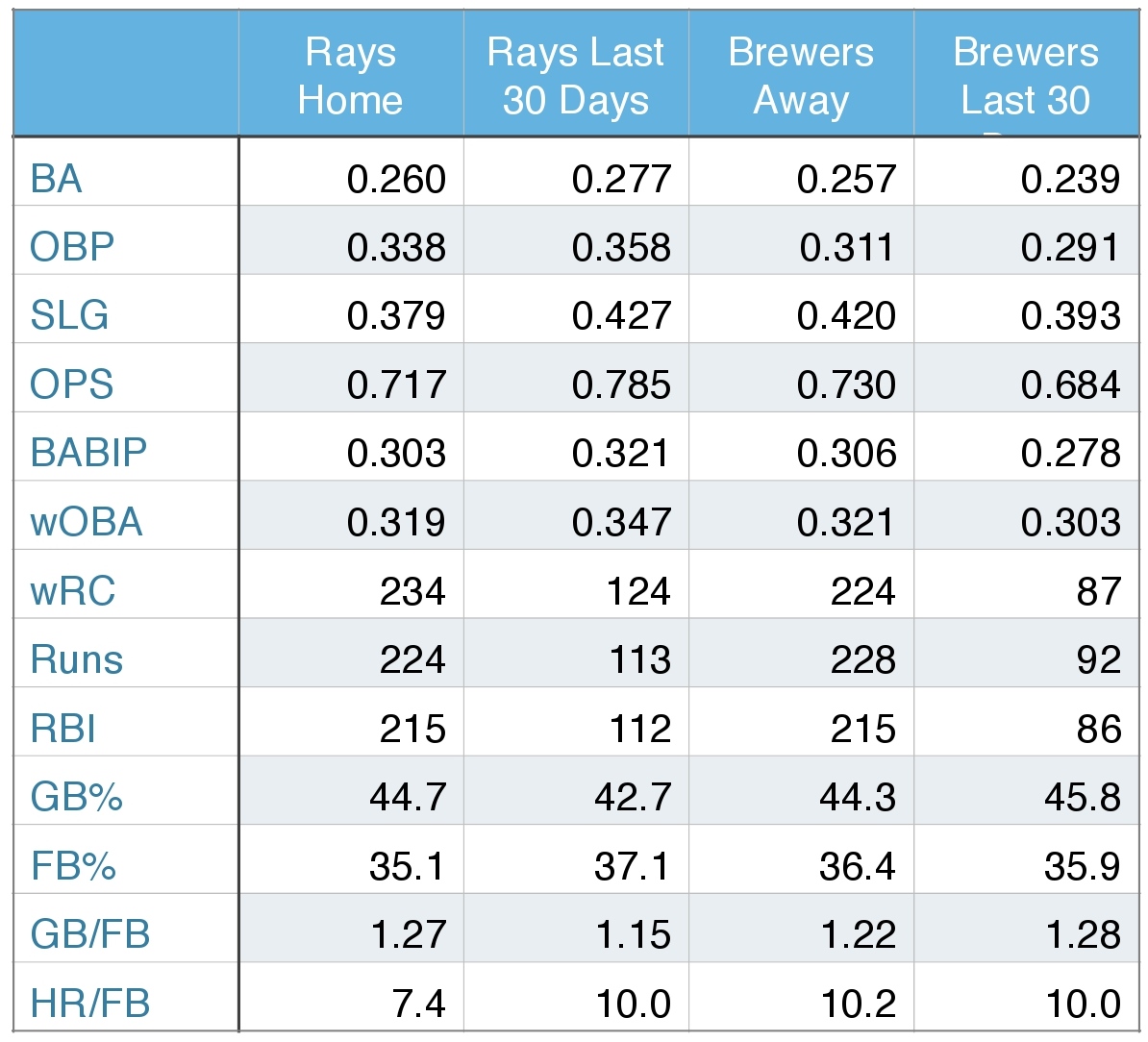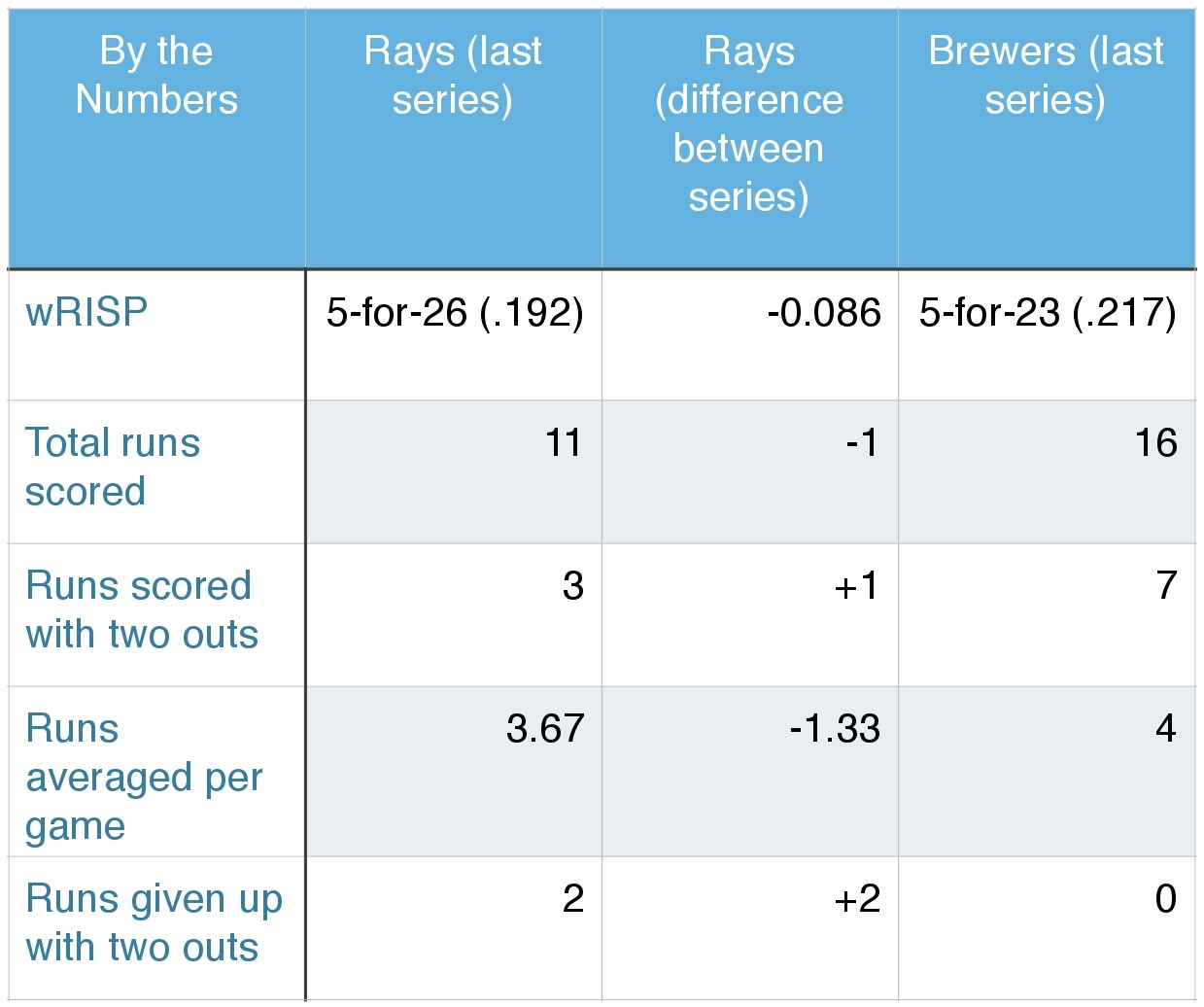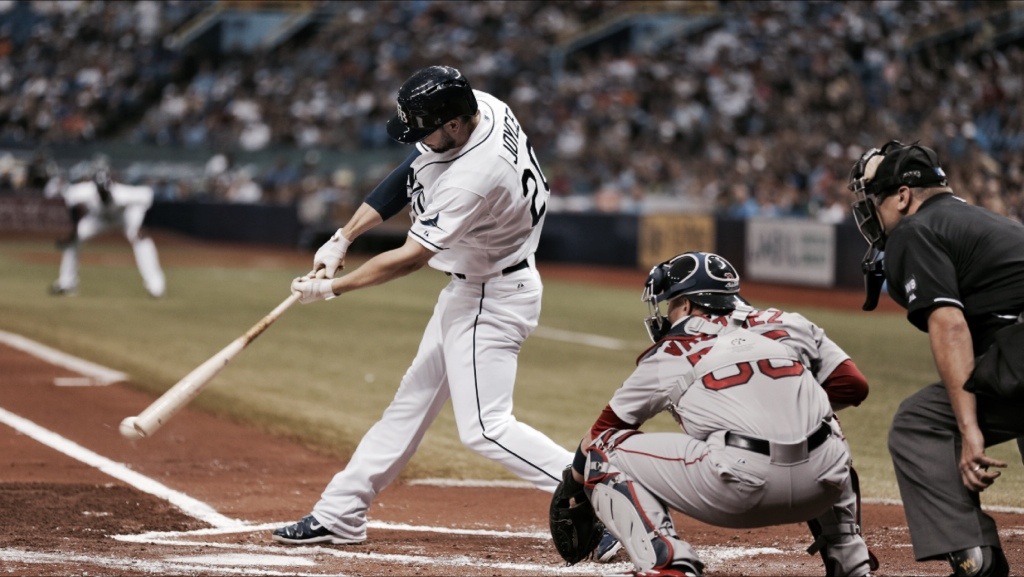
Call me neurotic, but every time Tampa Bay loses a game I slip into worry mode, with my biggest fear being the Rays are going to regress back into the team with inconsistent performance on the field. And though that may not be the best way to enjoy the team I love, it’s been my uncomfortable approach to the Rays since 2011.
To be fair, that approach hasn’t been unwarranted.
And despite my better judgement, when they lost Sunday afternoon, I worried that the Rays were starting down an unproductive path back to the bottom of the AL East. However, Tampa Bay — behind an excellent seven inning start by Jake Odorizzi — was able to walk away with the series opener Monday night. Both Odorizzi and Kyle Lohse were impressive in what would go down as a duel. Both worked quickly and matched one another until the Rays took the lead in the sixth.
Lohse kept the Rays off balance all night by varying his four-pitch repertoire — striking out six over six innings, though he did walk three batters. His pitches had a ridiculous amount movement, something that was even noticeable from where I sat in the outfield. But Odorizzi was better.
It has been fun watching young Jake evolve with the progression of the season. Where he once struggled with pitch efficiency, Odorizzi needed just 91 pitches to work through seven innings — an average of 13 pitches per inning. More impressive, 71% of the pitches he threw were strikes. Odorizzi rung up five and walked none, giving up only three hits in the process.
The Rays’ righty has relied upon his plus curve ball of late, yet he tossed only two curves the entire night. Odorizzi instead relied on his slider — tossing it 20 times to go with 25 splitters and 44 fastballs (per Brooks Baseball).

Jake Odorizzi made one costly mistake last night — leaving an 89 mph fastball over the heart of the plate to Mark Reynolds. The result was predictable.
This isn’t to say there weren’t any close calls for Odorizzi. As a team, the Brewers swing the bats hard and hit a lot of fly balls. Kevin Kiermaier found himself with his back against the wall in right on a couple of different occasions, and Khris Davis clobbered two towering fly balls that easily could have left the yard under different circumstances.
Situational statistics can be a good predictor of things. The stats say if Tampa Bay doesn’t do anything early in the game, the odds are good they’ll make something happen in the fifth or sixth innings. The Rays combined slash line jumps from .243 BA/.320 OBP/.373 SLG/.693 OPS in the first inning, to .277 BA/.346 OBP/.410 SLG/.756 OPS in the sixth. Not so ironically, the Rays made their offensive breakthrough in the bottom of the sixth inning.
With two outs, Ben Zobrist drew a five-pitch walk, bringing Matt Joyce to the plate. Joyce lined an outside fastball up the third base line for a base hit, allowing Zobrist to advance to third. Despite looking bad in his first two plate appearances against Lohse, Evan Longoria stepped up to the plate determined to put Tampa Bay on the board (and then some). Though he didn’t get anything good to drive, Longo worked a disciplined at bat, accepting a walk to load the bases for James Loney.
Loney didn’t disappoint. He hit an inside fastball over the infield and into right-center, plating two runs — all the Rays would need.
Yunel Ecobar attempted to put together an inning in the bottom of the seventh, but Jose Molina happened. As Ian Malinowski (of DRaysBay) wrote,
Yunel Escobar lined a high fastball from Jared Jeffress the other way for a single. That was good. Then Jose Molina tried to bunt and did so badly, fouling it backwards. On the next pitch, he tried to bunt again, doing so back to the pitcher. Jeffress picked it up, turned, and threw to second base in time to get Escobar. With Molina running, it was a sure double play.
Here’s why the Rays should never have Jose Molina bunt in that situation again. It’s a true sacrifice with no upside and extra downside. When most players bunt, there is a chance that they might beat the throw out, or that they force a fielder to rush and he makes a mistake. There is, at least, very little chance of a double play. If the opposing team tries for the lead runner, they risk not getting any outs. But with Molina running, it’s essentially a free pass to try for that lead runner. If you get him, double play. If you don’t oh well, go get the out at first.
The dominant late inning duo of Brad Boxberger and Jake McGee blew the Breweres away over the last two innings. They combined to ring up five of the six batters they faced. Rays win, 2-1!
The New What Next
The Rays start the day with a 15.5% chance of a postseason berth (ahead of the Yankees), 7.0 games out of first in the AL East, and 4.5 games back in the AL Wildcard race. Alex Cobb will take aim at their fifth consecutive series win against former Ray Matt Garza. Allow me to take you back to 2013, when Tampa Bay faced former Ray Matt Garza for the first time. The Rays absolutely crushed Garza to the tune of six runs on eight hits in the abbreviated, 4-1/3 IP start. Expect for Maddon to put into place the same game plan that was in place a little less than a year ago — attempt to exploit Garza’s weaknesses (specifically fielding). Whatever it takes to pressure the former Rays and force a meltdown. Incidentally, Alex Cobb toed the rubber opposite of Garza in that game. Cobb led the Rays to a 6-2 win over Texas, in an excellent eight inning outing. You can read about the pitching matchup in our series preview, and I’ll post the starting lineup when it becomes available.
Rays 7/29/14 Starting Lineup
Jennings CF
Zobrist 2B
Joyce DH
Longoria 3B
Loney 1B
Guyer LF
Escobar SS
Casali C
Kiermaier RF
Cobb RHP
Noteworthiness
- Ryan Hanigan, who has been on the DL with an oblique injury, is doing better. Per Marc Topkin, he’s eyeing rehab games with the Stone Crabs this week, with the plan to rejoin Tampa Bay Friday.
- The Rays have won 28 of their last 40 games since bottoming out at 24-42 on June 10.
- Your tweet of the day:
Amazing stat from @msimonespn: Since 5/20 infield 1B by Punto, LHB vs. #Rays Boxberger are 0 for 40 with 22 K, 3 BB pic.twitter.com/bq1Dk5toKu
— Marc Topkin (@TBTimes_Rays) July 29, 2014


